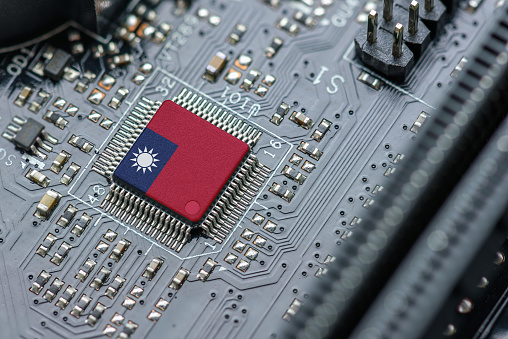How RTSP Builds on RTP
In this article, we will look at how RTSP builds on RTP. We will also look at the replaceTrack() method of the RTCRtpSender. These are two important elements of RTP. The first is the transport layer protocol UDP header, while the second one is the application layer protocol RTP version 2.
RTCRtpSender’s replaceTrack() method
If a track is null or a track object has no content, the replaceTrack() method can be used to replace it. Otherwise, it rejects the promise and stops the sender. The replaceTrack() method should not require negotiation when switching between tracks. A common example is switching between cameras on a phone. You can use replaceTrack() to create separate track objects for each camera.
RTCPeerConnection
The ICE agent creates an RTCDtlsTransport for each RTCPeerConnection data channel and media track. The RTCDtlsTransport is a transport mechanism for all RTCPeerConnection data.
The RTCPeerConnection object has different uses depending on the caller and the remote peer. For example, the onicecandidate handler sends ICE candidates to the remote peer, while the onaddstream handler displays the video stream received from the remote peer. In addition, the signaling server should implement a message handler. The message handler should add a JSON object (RTCSessionDescription) to the RTCPeerConnection object.
The RTCPeerConnection object has a certificate property. By default, it generates a set of certificates for use in the communication. However, if you want to use different encryption algorithms, you should provide multiple certificates to improve the chances of connecting.
ICE agent must be able to verify the identity of the remote peer. Without this information, the connection will not be successful. RTCPeerConnection has a list of ICE candidates. These candidates can be new, connected, or failed. ICE agent can also be in a state where it is gathering RTCP data.
The RTCPeerConnection function creates a connection between the local device and the remote peer. When the remote peer is not compatible with the SDP BUNDLE standard, it specifies negotiation of candidates. When the remote peer supports the SDP BUNDLE standard, it bundles all media tracks and data channels into one transport. Once negotiation is completed, the superfluous transports are closed.
RTCPeer
The rapid evolution of microchip technology is one of the most astounding stories in the history of technology. During a relatively short period of time, the number of electronic components on a microchip has doubled. This phenomenon, dubbed Moore’s Law, was first identified by U.S. engineer Gordon Moore in 1965. Since then, engineers have sought to make these components smaller and more affordable. Originally, it would have been impractical to make microchips large enough to accommodate the large amounts of electronic components.
In 2009, Microchip Technology was suffering from poor financial performance. Sales were falling and the company had little capital to invest. It was losing $2.5 million per quarter, had exhausted its lines of credit, and was struggling to control its expenses. The company was in danger of being acquired by Taiwan-based Winbond Electronics Corporation, but lost the deal after the Taiwan stock market plunged.
Microchip Technology has recently acquired EqcoLogic, a private semiconductor company that specializes in equalizers and coaxial transceivers. The acquisition is expected to boost the company’s position in automotive and industrial markets. The company’s 8-bit portfolio consists of over 1,200 products.
Microchips are small components that have made it possible to miniaturize hundreds of devices. The first commercial microprocessor was placed on a microchip by Texas Instruments in 1971. The subsequent development of microchips made them incredibly affordable and portable. This new technology also made it possible to fit whole computer CPUs on a single chip.
Microchips can be endowed with millions of interconnected microscopic transistors. As the atomic scale approaches, miniaturization becomes much more challenging. Moreover, the introduction of quantum uncertainty will render traditional electronic designs unreliable. Despite the potential of alternative technologies, silicon is likely to become obsolete by 2020.
RTSP builds on RTP
RTSP is a streaming protocol that is used to send video content over the internet. The protocol sends chunks of content, which are then reassembled into playable content. Its purpose is to save resources and time for both the sender and the receiver. However, this protocol is not suitable for all applications. For example, RTSP is not suitable for video streaming on small screens.
RTSP was standardized in 1998 as RFC 2326 and was designed to be compatible with the existing HTTP networks. The protocol used Session Description Protocol (SDP) to control multimedia communication sessions. When the device wants to play a stream, it sends a RTSP request to the media server, which initiates the setup process.
RTSP supports multiple arguments to control the data transfer process. When the user sends a RTSP request, the server responds with a list of available options. The server will also provide a brief description of the media. Upon receiving this information, the client can then decide what to stream and how to proceed.
RTSP is a protocol that is based on the RTP protocol and is used to transmit video and audio data. RTSP works much like HTTP and is described as a “network remote control for media servers”. It supports pause, play, and setup and leverages TCP to maintain a stable end-to-end connection. However, it is not yet widely used for broadcasting multimedia over the Internet.
Unlike RTMP, RTSP can be adapted for video streaming over the Internet. The difference is that RTMP is designed to transmit data from media server to media player, and RTSP is designed to transmit video data from one player to another. Its downside is that it lacks support for many players and it is not optimized for scale. However, many content producers and broadcasters still use RTMP encoders when delivering video.
